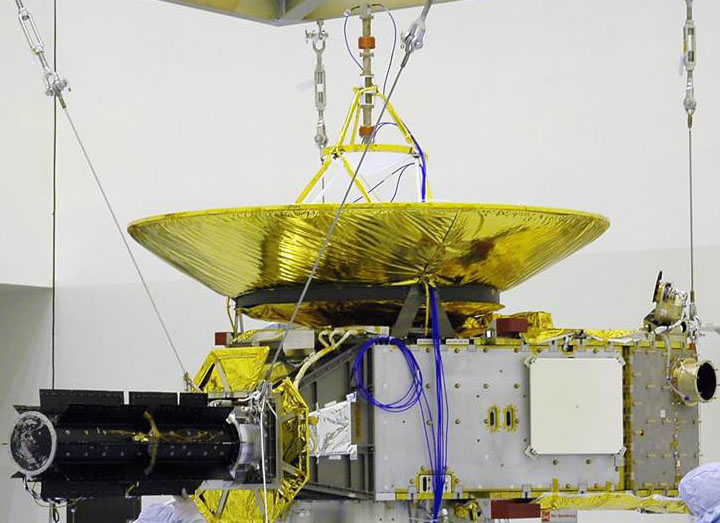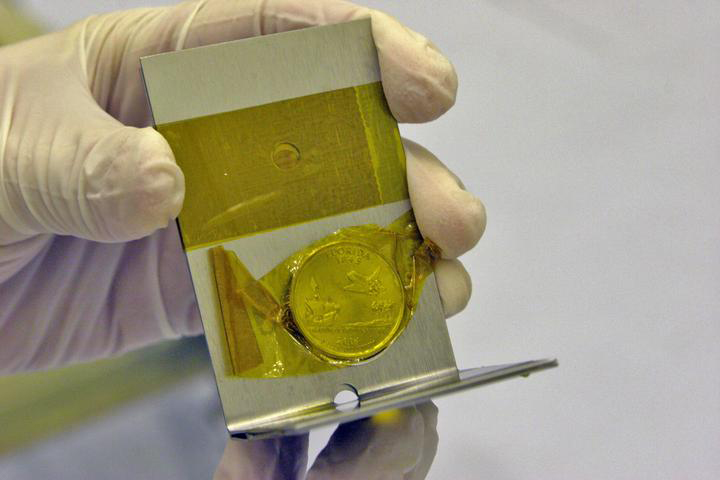Instruments New Horizons will use to characterize Pluto are
REX (atmospheric composition and temperature);
PEPSSI (composition of plasma escaping Pluto’s atmosphere);
SWAP (solar wind studies); LORRI (close up camera for mapping, geological data);
Star Dust Counter (student experiment measuring space dust during the voyage);
Ralph (visible and IR imager/spectrometer for surface composition and thermal maps) and Alice (composition of atmosphere and search for atmosphere around Charon).
Credit: NASA/Johns Hopkins University Applied Physics Laboratory/Southwest Research Institute
New Horizons is designed to retain heat like a thermos bottle. The spacecraft is covered in lightweight, gold-colored, multilayered thermal insulation – like a survival camping blanket – which holds in heat from operating electronics to keep the spacecraft warm. Heat from the electronics has kept the spacecraft operating at between 10-30 degrees Celsius (about 50-85 degrees Fahrenheit) throughout the journey.
New Horizons’ sophisticated, automated heating system monitors power levels inside the craft to make sure the electronics are running at enough wattage to maintain safe temperatures. Any drop below that operating level (about 150 watts) and it will activate small heaters around the craft to make up the difference. When the spacecraft was closer to Earth and the Sun, louvers (essentially heat vents) on the craft opened when internal temperatures were too high.
The thermal blanketing – 18 layers of Dacron mesh cloth sandwiched between aluminized Mylar and Kapton film – also helps to protect the craft from micrometeorites.
Structure

New Horizons' primary structure includes an aluminum central cylinder that supports the spacecraft body panels, supports the interface between the spacecraft and its radioisotope thermoelec
tric generator (RTG) power source, and houses the propellant tank. It also served as the payload adapter fitting that connected the spacecraft to the launch vehicle.
Keeping mass down, the panels surrounding the central cylinder feature an aluminum honeycomb core with ultra-thin aluminum face sheets (about as thick as two pieces of paper). To keep it perfectly balanced for spinning operations, the spacecraft was weighed and then balanced with additional weights just before mounting on the launch vehicle.
perfectly balanced for spinning operations, the spacecraft was weighed and then balanced with additional weights just before mounting on the launch vehicle.
 perfectly balanced for spinning operations, the spacecraft was weighed and then balanced with additional weights just before mounting on the launch vehicle.
perfectly balanced for spinning operations, the spacecraft was weighed and then balanced with additional weights just before mounting on the launch vehicle.
Not all balance weights are built – or even worth – the same! See what we mean
http://pluto.jhuapl.edu/Mission/Spacecraft/Systems-and-Components.php


ConversionConversion EmoticonEmoticon